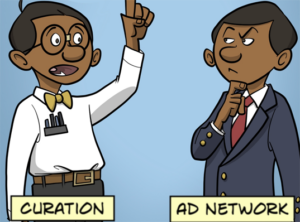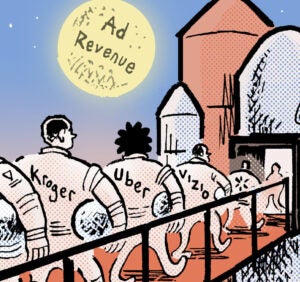“On TV & Video” is a column exploring opportunities and challenges in advanced TV and video.
Today’s column is by Tom Donoghue, VP of CTV and OTT at GroundTruth.
As we all get set to enjoy the traditions of fall, such as watching the leaves turn colors, visiting a pumpkin patch with the kids and enjoying one too many pumpkin spice lattes, marketers should also be thinking about how weather conditions could impact the performance of their advertising.
In fact, the winter storm that ripped across much of the United States in early February, which forced Walmart to close as many as 500 stores across the South and Midwest, is a stark reminder for all marketers that they need to have a winter-proof advertising strategy in place this holiday season.
Having the flexibility to pause or even activate in certain weather conditions will be vital to success as brands also face shifting consumer behaviors amid the ongoing pandemic and the COVID-19 delta variant.
Here are three things marketers can do to “winterize” their advertising strategy as the weather begins to change.
Follow your audience indoors
Fluctuations in weather conditions can turn even the hardiest of outdoor shoppers into online-first researchers. Cold, rainy or snowy conditions tend to keep most of us indoors where we, in turn, increase our screen time.
That means if you want to reach your audience during fall and winter, you’ll have to look for them indoors where they’re likely to be consuming on-demand content on connected TVs, tablets, desktops and mobile devices.
Moving some of your linear TV budget toward geo-contextual CTV advertising will mean better targeting, less wasted impressions and more measurable ROI.
Rain or shine
Whether your business increases or decreases during inclement weather, it’s crucial to put weather condition triggers in place that optimize the delivery of your advertising for when it’s most likely to have a positive impact on your bottom line.
For example, if you own a collision repair center, flex your ad impressions ahead of, during and immediately after a snowstorm when vehicle owners are more likely to need your services. If you own a furniture store, consider pausing your campaign during storm conditions when you know foot traffic drops off. Save those impressions for a nicer day when consumers are more likely to venture out.
Wasted impressions should be a thing of the past by now, yet marketers continue to run campaigns during weather conditions that simply cannot produce the result they need. Marketers should be focusing their impressions on the weather conditions that meet their business goals.
More snowbirds take flight this winter
Although there was a drop in snowbird travel from Northern to Southern climes in 2020 due to the pandemic, 2021 has shown signs of moving back to pre-pandemic travel volumes.
According to The Wall Street Journal, about 90% of the estimated 1 million snowbirds who travel annually from Canada say they will head for warmer areas compared with 30% last year. This important shift in travel to less inclement climates creates expanded local opportunities for entertainment, dining and recreation categories.
But reaching this audience isn’t about making a one-and-done effort. It’s important for marketers to stay engaged with snowbirds throughout the winter using personalized advertising based on their behavior and visitation patterns within their home location.
The strategies can vary, but the takeaway is simple: If you develop a strategy to winterize your advertising now, you’ll put your business in a position to succeed no matter what the weather looks like outside.
Follow GroundTruth (@GroundTruthCo) and AdExchanger (@AdExchanger) on Twitter.















